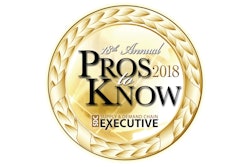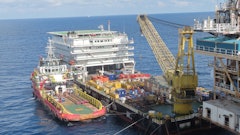
Supply chain control towers have been around for a few years now and enthusiasm for them remains high. Largely because they promise enormous value and are ambitious and challenging undertaking not easily achieved in today’s supply chains.
What is a control tower?
A control tower was originally conceived as a “war room,” a physical location that brought together analysts along with data from multiple systems and trading partners. This provided visibility to the supply chain and a reliable and accurate source of data for making supply chain decisions. However, as the cloud has gained traction, control towers are increasingly cloud-based, virtual dashboards of consolidated data from across the supply chain.
Despite the interest and investment in control towers, complete visibility remains elusive. In a recent survey by Geodis, “visibility” ranked as the third most important challenge among executives. Surprisingly, only 6 percent could claim to have achieved full end-to-end visibility, and most (62 percent) only had visibility to their immediate trading partners.
This creates a huge problem because without visibility to the complete supply network, you can’t plan or make supply chain decisions effectively. Imagine trying to play a game of chess when you can only see a quarter of the board. When there is ongoing systemic failure it’s time to reassess the assumptions underlying the approach.
Typically, control towers are built on loosely coupled legacy systems with point-to-point connections to key trading partners. Since these integrations are difficult to implement and maintain, they are often established with only a few important and immediate trading partners.
Due to the significant effort involved, few connections are established. As a result, these enterprise control towers face an uphill battle. With periodic batch transfers of data between partners, visibility is “rearview” rather than real time and thus of limited value. By the time you become aware of a problem, it is often too late to do much about it, as the window has closed on the cost-effective options.
At root, the problem is that these control towers try to connect on a partner-by-partner basis. This limits their ability to achieve the comprehensive view of the supply chain that a control tower aspires to deliver. It also means that trading partners have to integrate or join multiple systems or portals. They are effectively a second class “citizen” in the control tower hierarchy, contributing but not getting the value of the “hub” customer who controls the control tower.
A far more effective and successful method is to connect all trading partners to a common, real-time platform where partners connect once and share data over the network with all parties.
This platform delivers on the elusive goal of end-to-end visibility simply and elegantly, opening the door to other powerful applications such as multiparty and integrated planning and execution apps, real time collaboration tools and network-aware intelligent agents that can sense and respond to issues across the entire network.
What is required to bring this advanced control tower to fruition? Here are some key elements that underlie an effective control tower:
Multiparty Master Data Management (MDM) – A key inhibiter of business efficiency is the quality of the data driving business decisions. A control tower cannot function effectively without consistent data across systems and parties. A control tower needs Multiparty MDM to cleanse and map data to harmonize it within and across enterprises, providing a clear and consistent definition of product items, sites, customers, etc.
Permissibility Framework– With potentially tens of thousands of companies on a single network, ensuring each company’s confidentiality and security is paramount. A strong permissibility framework enforces granular permissions, so that network participants only have access to the information relevant to their individual role and business.
Network Intelligent Agent Technology – Companies and multiparty networks generate huge amounts of data making it is impossible to analyze the data manually, glean insights and act on all of it. Here, artificial intelligence is invaluable. In particular, intelligent agents can be used to continuously monitor and optimize the supply chain and modify and generate transactions in real-time across the multiparty, multitier network. Network optimization is much more powerful as it considers all conditions and constraints across the network rather than sub-optimizing around a few nodes and/or making a decision based on inadequate data.
Open-Ended – A control tower should recognize the past while embracing the future. Many legacy systems are good at what they do and offer significant value. Replacing them is often impractical, not cost effective and disruptive to the business processes the system is embedded in. In such cases, a control tower needs to integrate, synchronize and orchestrate the legacy systems. At the same time, technology is advancing rapidly, as we can see from the rapid rise of IoT, artificial intelligence and blockchain. A s such, a control tower must be forward-looking and incorporate new technologies quickly and easily. Blockchain is promising to improve visibility, transparency, trust and security. A control tower needs to work seamlessly with blockchain networks and other technologies such as voice, as they emerge and reach maturity.
Value Ramp – Implementing a control tower should not be a “big bang” proposition. There should be a smooth onramp to maximum value. Companies should be able to start where they are and ramp up as value is gained with proven return on investment. An agile, ROI-driven implementation method is an effect way to ensure the project stays focused on delivering enduring and maximum business value.
A network-based control tower on common platform provides a nerve center that extends visibility and control across the network. It eliminates blind spots, and greatly reduces risk and enhances compliance by bringing the full supply network under scrutiny. It can also coordinate systems and processes, analyze and course correct to keep your supply chain running smoothly. When problems arise that are outside the ability of agents to resolve, supply chain managers can collaborate with their partners across the network to resolve problems quickly and at the lowest cost.
We have come a long way from the idea of a control tower as a “war room,” a cloistered haven for the chosen few to analyze and plot. On the contrary, when built on a solid real-time network foundation, a control tower can be so much more. It can be a platform for total visibility and collaborative planning and execution across all trading partners. It can run network-aware solutions and intelligent agents that see the whole “chessboard.” Every company can have its own control tower, without being subordinate to the strongest trading partner. More importantly, these modern control towers can power a new age of agile, intelligent and super-efficient supply chains that provide benefits to all involved.



















